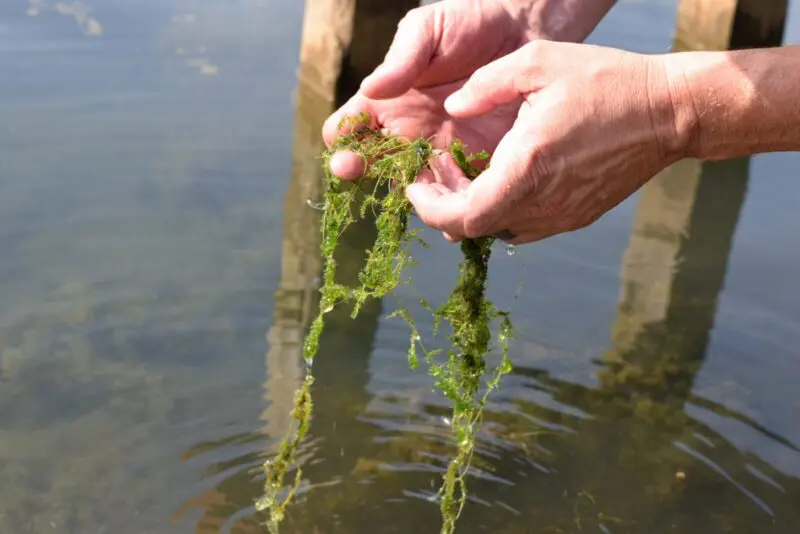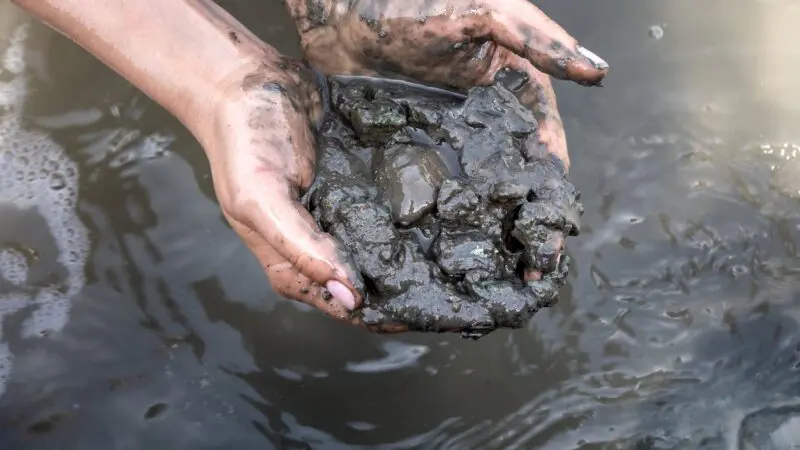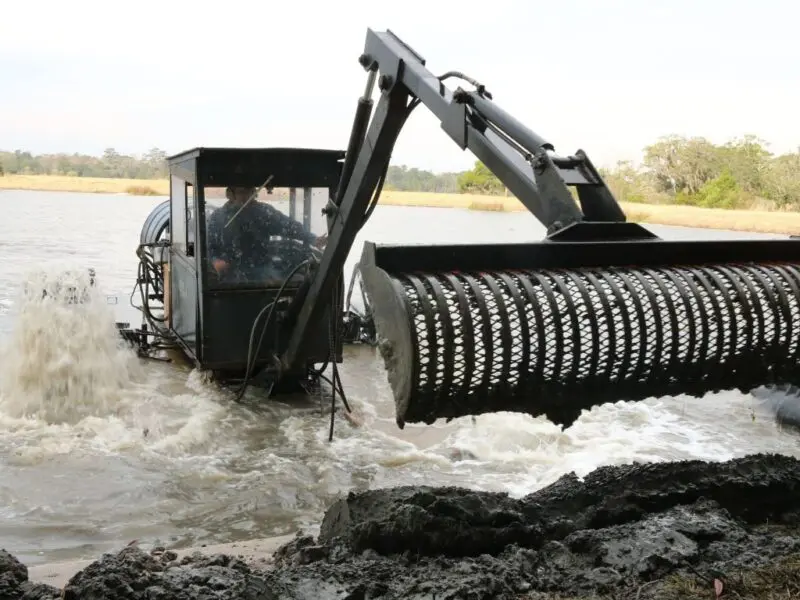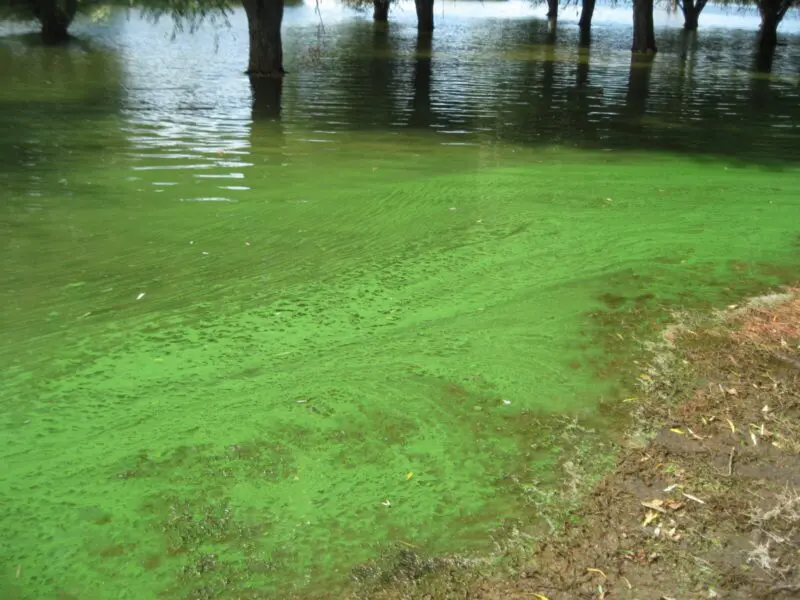Summer storms often bring more than heavy rain and strong winds. After the clouds clear, lakes, ponds, and rivers can face an influx of nutrients, sediment runoff, and sudden spikes in water temperature.
Such conditions provide ideal circumstances for algae blooms and muck buildup to develop rapidly. Increased runoff carries fertilizers, organic debris, and other pollutants directly into the water, intensifying the problem.
Recreational areas, fisheries, and overall water health can suffer greatly if these issues are not addressed quickly.
Nutrient-rich conditions feed algae growth, while decaying plant material and sediment accumulate at the bottom, creating thick muck.
Addressing these challenges promptly and strategically is essential for maintaining water quality, aquatic life, and safe public use.
Table of Contents
ToggleTypes of Post-Storm Algae and Muck Issues

Different water quality problems can appear after summer storms, each requiring tailored solutions.
Heavy rainfall often washes in nutrients and organic debris that set the stage for rapid algae growth and muck accumulation.
Recognizing the type of problem early allows for more targeted and effective action.
The most common post-storm issues include:
Filamentous Algae
Often developing in shallow or moving waters, filamentous algae form dense, string-like mats that can:
- Clog shorelines
- Limit light penetration
- Disrupt aquatic habitats
Such mats also interfere with swimming, fishing, and boating activities, creating both ecological and recreational challenges.
Planktonic Algae

Responsible for green water blooms, planktonic algae are microscopic organisms that reduce water clarity and can significantly lower oxygen levels at night due to respiration.
These conditions may stress fish and other aquatic life, especially in smaller or stagnant water bodies.
Blue-Green Algae (Cyanobacteria)
A more serious concern in post-storm environments, blue-green algae can multiply rapidly under favorable conditions, producing harmful toxins.
These toxins pose risks to humans, pets, and wildlife.
Contact or ingestion can lead to illness, making consistent monitoring an important safety measure.
Muck Buildup

Resulting from decomposing leaves, plants, and other organic material settling at the bottom, muck buildup forms thick layers that emit unpleasant odors.
As it breaks down, muck releases nutrients back into the water, fueling future algae blooms and contributing to declining water quality over time.
Identifying which problem is present in the aftermath of a storm is essential for applying the right intervention method and preventing long-term degradation of the aquatic environment.
Immediate Post-Storm Actions
Swift intervention in the hours and days after a storm can greatly influence water recovery.
Heavy rainfall and runoff can trigger sudden changes in water chemistry, so the first priority is a thorough water quality assessment.
Testing should measure:
- Dissolved oxygen to determine if aquatic life is at risk of suffocation
- pH levels to detect sudden acidity or alkalinity shifts
- Nutrient concentrations, especially phosphorus and nitrogen, which fuel algae growth
- Cyanobacteria presence to ensure that harmful blooms are identified quickly

Once water conditions are evaluated, physical removal becomes the next step.
Skimming floating algae, leaves, and debris from the surface prevents organic matter from sinking and decomposing, which would release additional nutrients.
Submerged weeds and muck can be tackled using mechanical rakes, hydro-rakes, or a pond cleaning machine, improving both circulation and appearance.
In situations where oxygen depletion is a concern, emergency aeration can stabilize conditions.
Surface aerators or fountains help maintain oxygen levels and reduce fish stress, giving the ecosystem a better chance at recovery.
Rapid action at this stage can prevent long-term damage that would require far more intensive restoration later.
Priority steps:
- Test water for oxygen, pH, nutrients, and cyanobacteria
- Remove floating and submerged debris
- Apply emergency aeration if oxygen is low
Short-Term Algae & Muck Control Methods

Short-term control measures are designed to quickly address the immediate effects of a storm on a waterbody, stopping algae growth before it becomes unmanageable and speeding up the breakdown of organic matter.
Beneficial bacteria dosing is among the most effective methods for this purpose.
Reduced nutrient availability weakens algae’s ability to multiply, while the bacteria work naturally within the ecosystem without disrupting beneficial aquatic life.
Regular dosing in the days following a storm can set the stage for a faster recovery.
Another powerful approach is the use of nutrient-binding agents. These products, often based on compounds like aluminum sulfate or lanthanum, lock up excess phosphorus so it can no longer feed algae blooms.
This step is particularly important after heavy rain, when stormwater runoff often carries fertilizers, grass clippings, and soil particles into the water, spiking nutrient levels.
Applying binders early can prevent an explosive bloom from developing.
When algae growth surpasses safe or manageable levels, selective algaecides may be the only option for rapid control.
Careful application is critical, as killing large colonies at once can trigger mass decay, which releases more nutrients and sharply reduces oxygen levels.
Applying in smaller sections, monitoring oxygen, and choosing algaecides suited to the algae type help minimize risks. Proper timing and adherence to application guidelines ensure maximum effectiveness while protecting aquatic life.
Effective tools for short-term control:
- Beneficial bacteria for organic matter breakdown and nutrient reduction
- Phosphorus binders to lock up storm-driven nutrient loads
- Selective algaecides for critical algae control situations
Long-Term Prevention Strategies

Sustaining water health through the year requires ongoing preventive measures that reduce the chance of algae and muck problems developing in the first place.
Aeration systems, such as bottom diffusers and water circulators, play a central role in prevention.
By continuously moving and oxygenating water, these systems help prevent stagnant zones, discourage nutrient release from sediments, and support beneficial bacteria activity.
Healthy oxygen levels also improve fish health and keep organic matter from accumulating as quickly.
Native shoreline buffers made up of deep-rooted plants, grasses, and shrubs act as a natural filtration system. They slow down surface runoff, trap sediment, and absorb excess nutrients before they enter the water. After major storms, these buffers can significantly reduce the load of pollutants reaching the aquatic system.
Erosion repair is another key factor. Using bioengineering techniques such as coir logs, vegetated mats, and reinforced planting, damaged shorelines can be stabilized to prevent further soil loss.
Encouraging beneficial submerged plants provides natural competition for algae by taking up available nutrients and blocking sunlight from reaching the water column.
Managing human and wildlife activity is equally important. Restricting the feeding of ducks, geese, and fish reduces excess organic matter and nutrients.
Limiting high-impact recreational activities during sensitive post-storm periods can also prevent disturbance of sediments and vegetation.
Prevention measures for long-term water health:
- Aeration systems for oxygenation and circulation
- Native shoreline buffers for nutrient and sediment filtration
- Erosion repair using bioengineering methods
- Beneficial aquatic vegetation to compete with algae
- Wildlife and activity control to limit nutrient introduction
Summary
Post-storm algae and muck issues require both rapid intervention and consistent year-round care.
Immediate testing, debris removal, and emergency aeration protect aquatic life in the short term, while beneficial bacteria, nutrient control, and selective treatments help stabilize conditions.
Long-term success depends on prevention methods like aeration, vegetation buffers, erosion control, and careful activity management.
Consistent attention ensures water remains clear, safe, and healthy for recreational use and ecological balance. Patience is essential, as clear water is the product of steady and strategic care.










